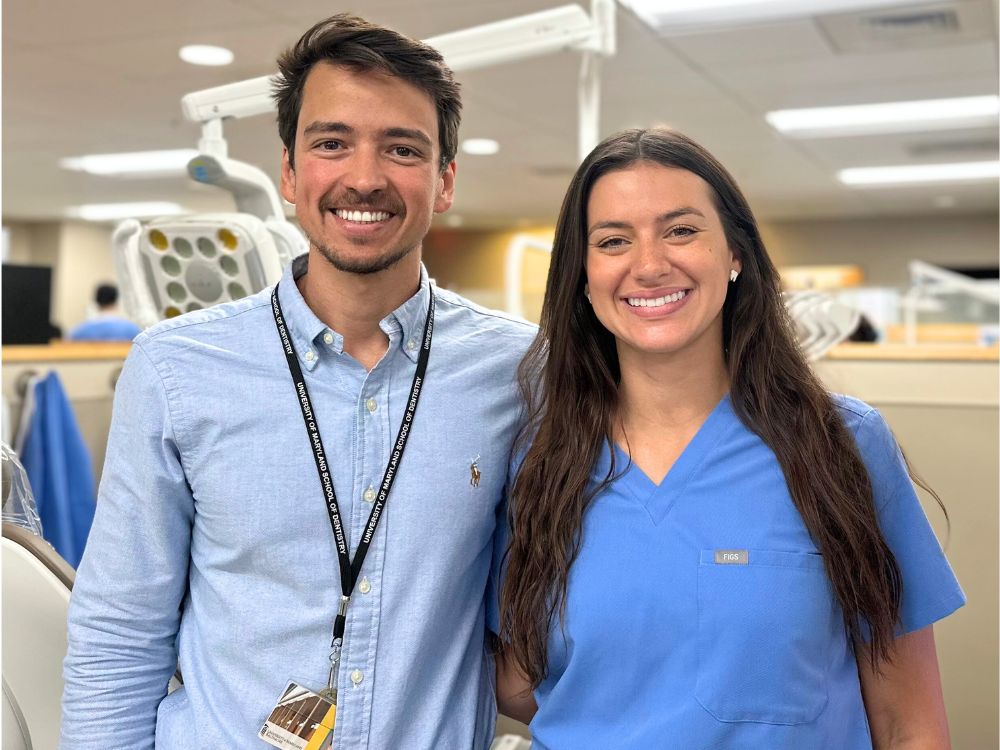Researchers Test New Method to Attach Braces to Protect Tooth Enamel
For decades, orthodontists have relied on a tried-and-true process to attach braces. They etch tooth enamel with a weak acid solution, then bond metal brackets to the roughened surface. The process is effective but can contribute to permanent white spots or weakened enamel in some patients.

Flavio Copello, DDS, MS, PhD, and Sydney Gladfelter, DDS
Researchers at the University of Maryland School of Dentistry think there might be a better way.
Flavio Copello, DDS, MS, PhD, clinical assistant professor, and orthodontic resident Sydney Gladfelter, DDS, launched a clinical trial Aug. 11 to test whether a new adhesive can attach brackets just as effectively without the acid etching step to simplify the process and reduce potential risks.
Current orthodontic practice involves applying phosphoric acid to roughen tooth enamel before bonding brackets. This creates a strong attachment but also can increase the risk of white spots that appear as chalky marks that can become permanent reminders of braces long after they’ve been removed.
The new adhesive, recently showcased at the American Association of Orthodontists’ Annual Session in Philadelphia, is designed to bond directly to enamel without acid treatment. It also promises faster bracket placement and better resistance to saliva contamination.
The 20 patients in the year-long study will experience both approaches. One side of each patient’s mouth will receive brackets bonded with the new ORMCO etch-free material, while the other side gets the current gold standard treatment using Transbond XT adhesive with acid etching.
The split-mouth design allows researchers to directly compare how well each method works under identical conditions in the same patient.
“The results will provide clinicians with evidence on whether this new material offers practical advantages in everyday orthodontic practice,” Copello said.
Over the 12-month study period, the team will track which brackets fall off, how long bonding takes, and what the teeth look like once treatment ends. They’ll also monitor for white spot lesions and other signs of enamel damage.
The research could lead to gentler orthodontic care that produces the same smile-straightening results with less risk to tooth health.
The trial, which is registered with ClinicalTrials.gov under the identifier NCT07091422, is currently recruiting patients.



